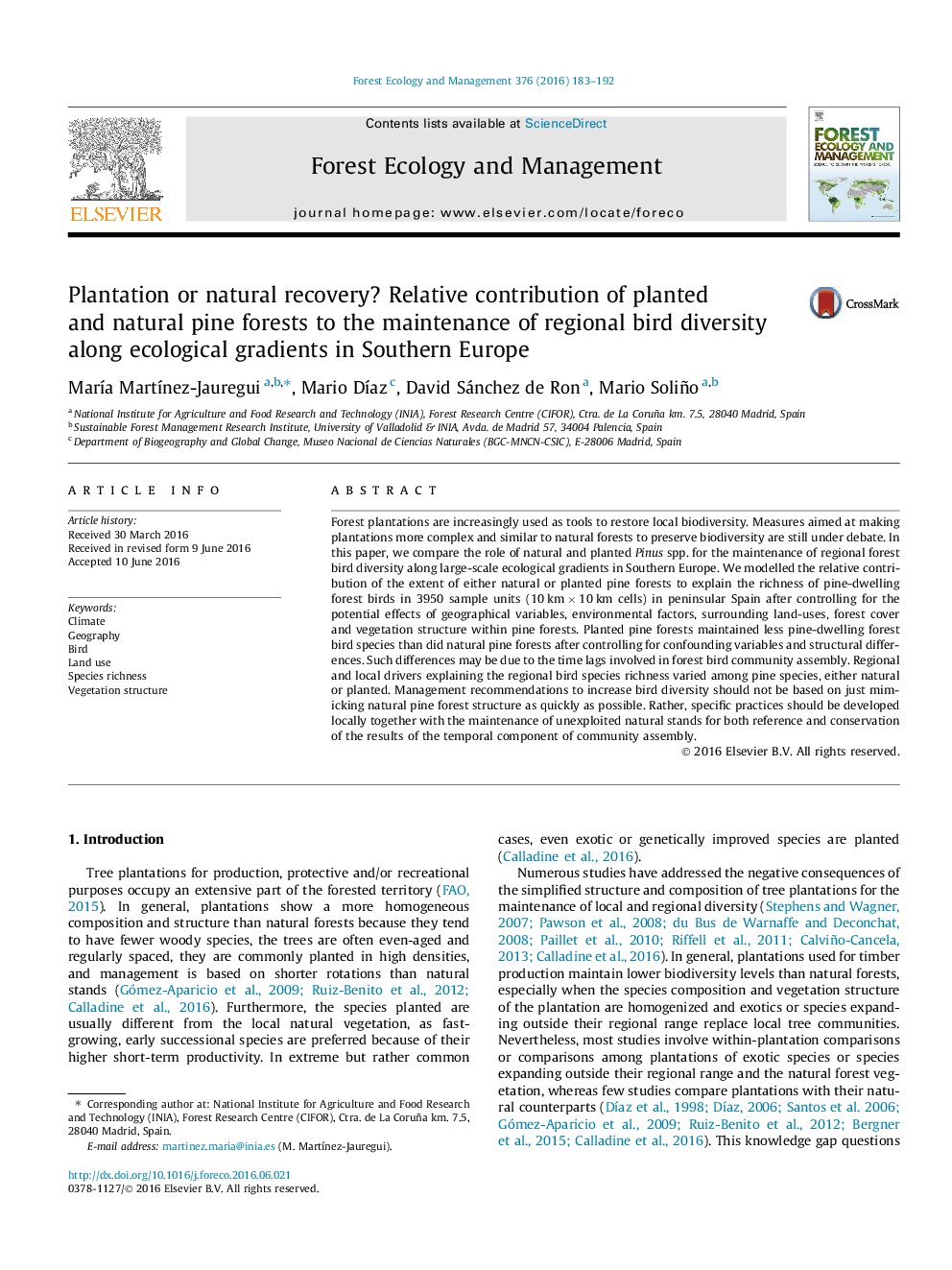| Article ID | Journal | Published Year | Pages | File Type |
|---|---|---|---|---|
| 6542122 | Forest Ecology and Management | 2016 | 10 Pages |
Abstract
Forest plantations are increasingly used as tools to restore local biodiversity. Measures aimed at making plantations more complex and similar to natural forests to preserve biodiversity are still under debate. In this paper, we compare the role of natural and planted Pinus spp. for the maintenance of regional forest bird diversity along large-scale ecological gradients in Southern Europe. We modelled the relative contribution of the extent of either natural or planted pine forests to explain the richness of pine-dwelling forest birds in 3950 sample units (10 km Ã 10 km cells) in peninsular Spain after controlling for the potential effects of geographical variables, environmental factors, surrounding land-uses, forest cover and vegetation structure within pine forests. Planted pine forests maintained less pine-dwelling forest bird species than did natural pine forests after controlling for confounding variables and structural differences. Such differences may be due to the time lags involved in forest bird community assembly. Regional and local drivers explaining the regional bird species richness varied among pine species, either natural or planted. Management recommendations to increase bird diversity should not be based on just mimicking natural pine forest structure as quickly as possible. Rather, specific practices should be developed locally together with the maintenance of unexploited natural stands for both reference and conservation of the results of the temporal component of community assembly.
Related Topics
Life Sciences
Agricultural and Biological Sciences
Ecology, Evolution, Behavior and Systematics
Authors
MarÃa MartÃnez-Jauregui, Mario DÃaz, David Sánchez de Ron, Mario Soliño,
